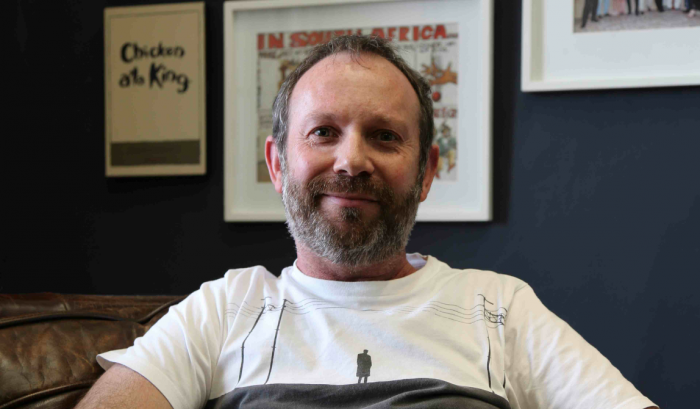
Since it launched just a month ago ‘The One Rand Man’, King James’s campaign for Sanlam, has collectively had over half a million views on YouTube and been featured in several prominent consumer and B2B publications. The story of one man and his day-by-day attempts to pay for everything – from beers to car instalments to his monthly rent – in R1 coins has captured consumers’ and the media’s imaginations alike. It may come as a surprise, then, to learn that the campaign was not created in response to a brief.
The idea of getting people to look at their money in a different light had been rattling around the King James offices as they were working on a rebranding plan for Sanlam. It began, says King James chief creative officer Alistair King, with wanting to portray the typical person stuck in the trap of debt.
"We wanted to ask them to spend a month looking at their money. What would happen if you had to look at a rand, every single day, instead of using credit cards where you’re removed from your money?" asks the Cape Town agency’s co-founder. It became a kind of social experiment.
"That was the pure idea. Then we wanted to record it and create a series of films," says King, whose many accolades include being singled out as "Most Admired Creative Director in South Africa" by Marklives.com in 2013.
It’s the difference between merely pushing a product and telling a story. "We’re not trying to sell anyone a Sanlam product," he points out.
What we are trying to do is show, in a very literal way, what happens if someone is forced to see how they spend their money on a daily basis, says King.
"It’s very different to an ad that says ‘we’ve got a product for you’. We are giving people information that they’ll hopefully use for the right purpose and when they do use it, hopefully they use it with Sanlam. That’s the full circle."
In essence, the One Rand Man encapsulates the ethos of content marketing, which utilises editorial-style stories to market a brand or product. The brand is not overtly pushed to the audience, but rather the ideology or industry values behind it.
This is not something new, of course.
Content has existed forever and ever, amen, says King. As long as we’ve been selling clients’ products to people, what we’ve created is content.
He doesn't understand the industry's fascination with the term 'storytelling'. "To me it’s just a very delicate way of promoting something. That’s always been the challenge of advertising," he says. "It’s an ongoing evolution in how we represent brands to our consumers, and the techniques we use to sell it."
What distinguishes great ads is their ability to captivate their audiences’ attention for longer than the length of the ad itself, he believes. This typically comes from creating a story that speaks to consumers as human beings rather than just playing to an urge to own the latest, greatest product. "I often tell marketers, it's not always about you," he says.
Advertisers and brands alike need to understand audiences’ consumption habits and create content that will speak to them and their interests. So a human-interest story is more likely to engage them if their time and attention is short.
"There are bad agencies and bad clients who shout at you: ‘Save this!’ 'Get this for free!' ‘Look at this person, they use the product and look how it’s improved their life!’. Then there are more stylish marketers who have worked out delicate, classy ways to communicate the same thing," says King.
Sanlam as a brand were confident enough in the messaging of the One Rand Man concept that they did not feel they had to curtail the video series with their various offerings, he explains. They went on the belief that if they drew attention to the issues that they provide solutions for, they’d make an eloquent point about what they stand for. It required a leap of faith.
There are marketers that see risk in everything. They are just constipated with stress because everything is scary for them, he says.
"Those types of marketers tend to gravitate towards formulas because they feel that if it hasn’t worked before, it's too risky to try," he continues. "They gravitate to research because they want someone else to tell them that what they are doing is ok. What those marketers do is rubbish, it’s wallpaper, it’s like Voldemort, it sucks the soul out of everyone. And therein lies the risk: if you are creating work that sucks the soul out of everyone who sees it, that is a risk."
Anything new is risky – without exception, he says. The irony is that taking risks is more likely to yield positive results. "The world craves newness all the time. The best way to cut through the clutter is to put something new in front of a person. I think that that is actually the least risky thing a brand can do. So, in fact, creativity and imagination have less risk than formulas or ‘proven’ methods."







